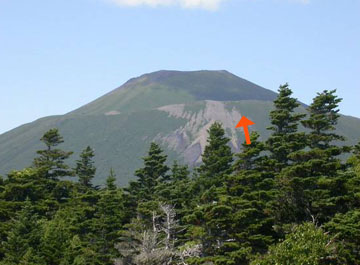This page has been archived and is being provided for reference purposes only. The page is no longer being updated, and therefore, links on the page may be invalid.
|
|
|
|
|
|
ARS Sends Third Seed Shipment to Norway Seed Vault
By Jan SuszkiwMarch 11, 2010
A shipment of seed sent by the Agricultural Research Service (ARS) earlier this month to the Svalbard Global Seed Vault in Norway included a wild Russian strawberry that an expeditionary team braved bears and volcanoes to collect.
The seed shipment—ARS’ third since January 2008—included wild and cultivated soybeans, semi-dwarf wheat and rice cultivars, and other samples maintained in the agency’s National Plant Germplasm System (NPGS). ARS’ goal, over the next 10 to 15 years, is have the majority of the system’s 511,000 collections stored in the vault, which is administered by Norway’s Nordic Genetic Resources Center together with the Global Crop Diversity Trust.
The vault itself is built into a mountainside on Spitsbergen Island, located midway between Norway’s northernmost coast and the North Pole. With this third U.S. shipment, the facility will house more than 500,000 plant accessions obtained from around the world. However, the total storage capacity is likely 10 times that amount, notes plant physiologist David Ellis with ARS’ National Center for Genetic Resources Preservation in Fort Collins, Colo. Ellis coordinates the shipments of seed obtained from multiple ARS locations.
Worldwide, there are about 1,400 operating genebanks. The Svalbard vault’s purpose isn’t to replace them, but rather to provide a secure remote backup location for the genetic diversity contained in the genebanks, should their collections be lost due to natural disaster or other reasons.
The ship containing ARS’ contributions “set sail” the last week of February and arrived the first week of March, adding 10,522 samples of seed to the Svalbard collection. Strawberry specimens included Fragaria iturupensis, a wild relative originally collected in 2003 from the island of Iturup in Far Eastern Russia by scientists from the N.I. Vavilov Institute of Plant Industry. Led by senior scientist Andrey Sabitov, an ARS collaborator, the team hiked for three days in bear territory to obtain the seeds from the Atsunupuri Volcano’s lower flank.
Horticulturist Kim Hummer of the ARS National Clonal Germplasm Repository in Corvallis, Ore., received some of the seed, which may provide genes for new flavor components or pest resistance. This seed has now been sent to Svalbard for long-term preservation.
ARS is the principal intramural scientific research agency of the U.S. Department of Agriculture (USDA). The research supports the USDA priority of promoting international food security.


